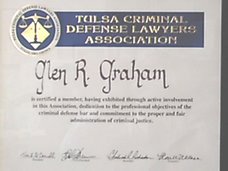http://moritzlaw.osu.edu/osjcl/Articles/Volume1_2/Commentaries/Marcus_1_2.pdf
Sentencing in the Temple of Denunciation: Criminal Justice’s Weakest Link
by Judge Michael H. Marcus* (Circuit Court Judge in Oregon)
From the Ohio State Journal of Criminal Law (Vol. 1, Page 670-681)
I. SENTENCING REALITIES:
Judges handling criminal cases in Multnomah County have added a box to orders for "pre-sentence investigations" to require that the report include analysis of "what is most likely to reduce this offender’s future criminal conduct and why, including the availability of any relevant programs in or out of custody." And we have begun discussions with our probation department management to incorporate a similar focus into routine probation reports and hearings. "What works" is increasingly addressed in sentencing discussions, and there is great hope that this effort will help free criminal justice from its archaic baggage and make it a responsible institution of public safety. We surely have a practical application for the relevant academic disciplines. If this progresses as intended, transformation of the sentencing ritual will eventually focus public debate and legislative policy on rational crime reduction.
We now know a lot about what does and does not work. Scared Straight, D.A.R.E.,
shock incarceration, shock probation, and boot camp programs do not work and
frequently do more harm than good.See generally LAWRENCE W. SHERMAN ET AL., NATIONAL INSTITUTE OF JUSTICE, U.S. DEP’TOF JUSTICE, PREVENTING CRIME: WHAT WORKS, WHAT DOESN’T, WHAT’S PROMISING (July 1998), available at http://www.ncjrs.org/pdffiles/171676.pdf;
OREGON DEP’T OF CORRECTIONS, COMMUNITY CORRECTIONS: WHAT PROGRAMS WORK?, at http://www.doc.state.or.us/community_corrections/cc_in
_or/whatwork.shtml.
For low-risk offenders, lighter sanctions, shorter sentences, and minimal supervision
correlate with reduced criminal behavior as compared with more severe responses.
Treatment programs that identify and responsibly address multiple criminogenic factors
are much more effective than treatment programs that do not address criminogenic factors,
and substantially more effective than programs that address only one or two criminogenic factors. Prison terms as a means of incapacitation work very well during the period of imprisonment. Measured by its impact on recidivism after release, though, any sentence longer than six months is probably counterproductive.
Criminal Sentencing Realities - What Works? - Recommendations by Judge Michael H. Marcus
Subscribe to:
Post Comments (Atom)




No comments:
Post a Comment